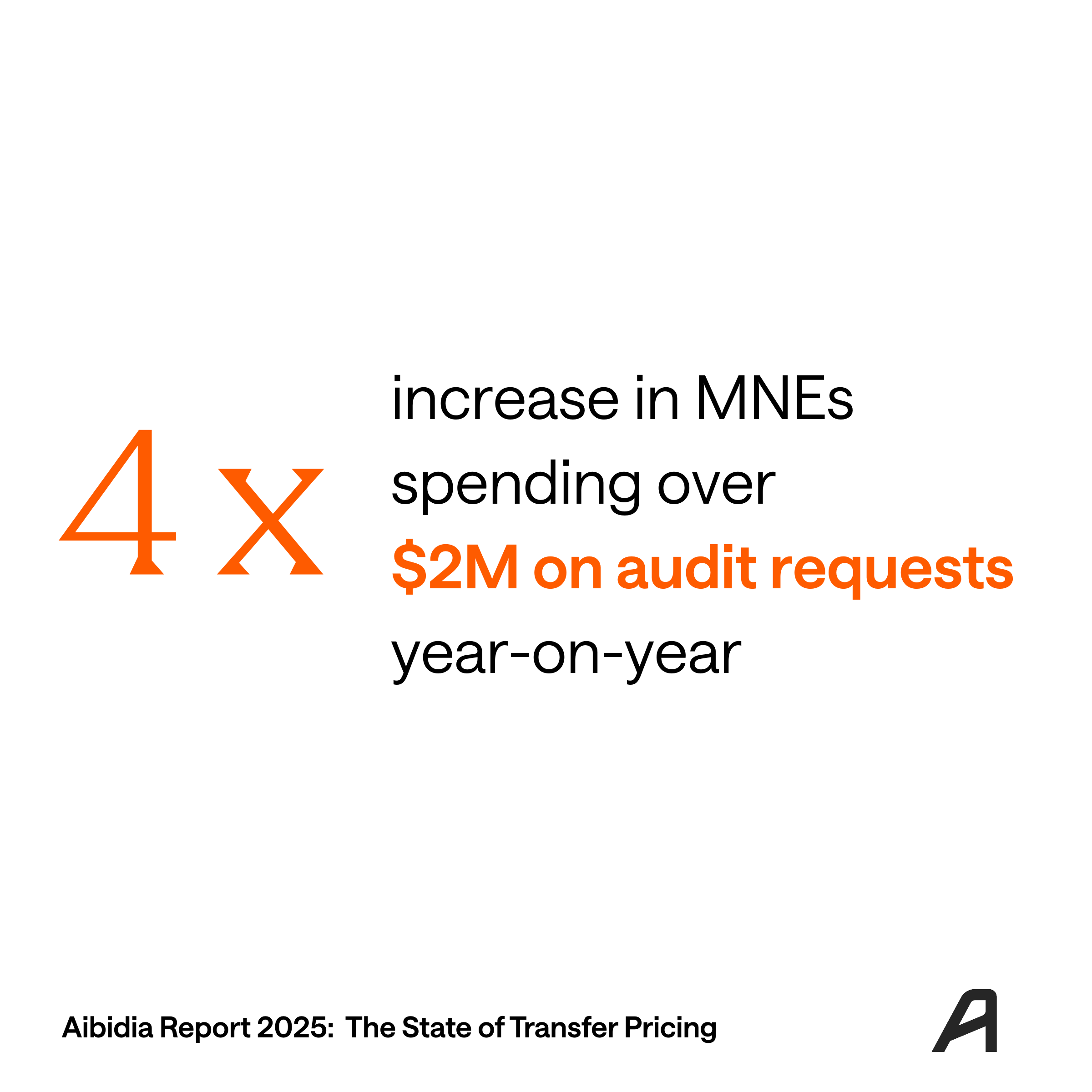
The 2025 Aibidia Report on the State of Transfer Pricing paints a clear picture: global transfer pricing is no longer just a compliance function. It’s become a strategic discipline under intense pressure from regulators, auditors, and the business itself.
What is the Aibidia Report?
The Aibidia Report, now in its second year, is an annual industry study that brings together perspectives from in-house professionals, advisors, and stakeholders worldwide. It provides a data-driven snapshot of how the transfer pricing profession is evolving, helping leaders compare practices, spot emerging trends and understand where the industry is heading. This year’s edition is bookended by contributions from leading voices in IBFD and PwC, with contributors from other industry voices throughout..
From rising audit costs to the slow march of automation, the report reflects a profession caught between the demands of today and the possibilities of tomorrow. Based on insights from 148 professionals across industries, geographies, and company sizes, five transfer pricing trends stand out as shaping the year ahead:
- Audit defense has become the top priority
Audit workloads and costs are climbing fast. Half of respondents now spend 50–200 hours per audit response, and cases costing $1m+ are no longer rare. Yet only 13% of TP teams feel truly prepared. Strengthening audit defense is now the undisputed #1 priority. ITR featured Aibidia’s data on rising audit costs and workloads, underlining how critical the issue has become for MNE tax leaders.
- Operational Transfer Pricing (OTP) execution gaps are widening
OTP is widely adopted but often weakly executed. Just 35% of companies report having well-defined processes, while most still rely on reactive year-end true-ups. As expectations shift toward on-time accuracy, these execution gaps risk becoming liabilities.
- Data maturity remains elusive
Data is the backbone of modern TP, but most MNEs still operate with fragmented systems. Only 14% say they use structured data heavily, leaving the majority exposed to inefficiencies and audit risk. Centralization alone isn’t enough; governance, ownership, and tooling are critical.
- Technology adoption is growing, but fragmented
Specialist TP software adoption jumped from 22% to 42% year-on-year, yet just 1% of teams use end-to-end platforms. Most adoption remains incremental and use-case specific. Manual reliance on Excel still dominates in many organizations, despite clear recognition that it’s unsustainable.
- Hybrid resourcing is now standard
The in-house vs. outsourced debate is over. 92% percent of TP teams use external advisors in some form. Hybrid delivery is the new norm, giving companies access to expertise while stretching limited resources. Data maturity often determines how much can realistically be handled in-house.
A Profession in Transition
Taken together, these themes reflect a profession under strain, but also adapting with intent. The message is clear: transfer pricing teams are being asked to do more, faster, and with greater transparency, but they are also finding ways to evolve. The shift is from compliance to control, from reaction to strategy. For leaders, this means doubling down on audit defense, building stronger operational processes, and investing in data and technology that can carry them forward.
Looking Ahead
This blog is the first in a five-part series exploring the findings of the Aibidia Report 2025. In the weeks ahead, we’ll dive deeper into each theme, from the rising tide of audit scrutiny to the execution gaps in OTP, the data challenge, and the role of technology and AI.
Each post will share key data so you can see how peers are responding and feeling and compare this to your own situation.
Key Takeaways for TP Leaders
- Audit defense is the top risk (and the top opportunity for value).
- Data and OTP execution remain weak spots for most.
- Hybrid resourcing and incremental technology adoption are reshaping how teams operate.
- The pressure is real, but so is the momentum.
You can download the report in full, here.
You can also watch this virtual discussion held recently by TP experts from H&M, Sanofi and Remote, discussing the findings of the report.
Further Reading:
- International Tax Review - TP costs rocket for MNEs, report reveals
- What this means for Finance Leaders, The CFO - Transfer pricing’s identity shift from cost sink to catalyst





.png)

.png)

.png)
.png)






.svg)
